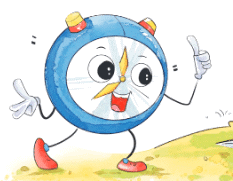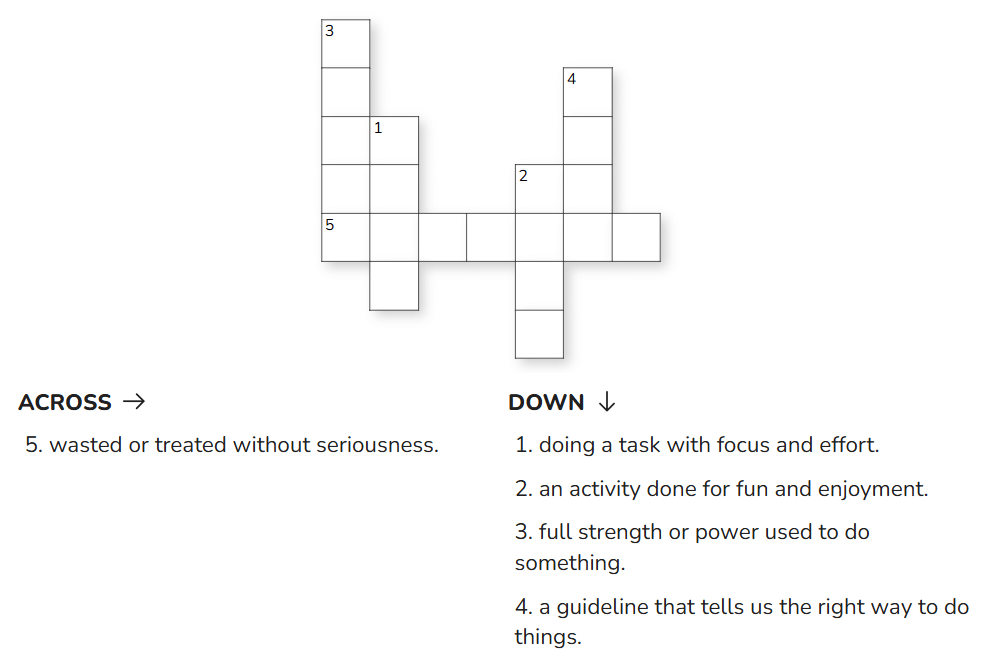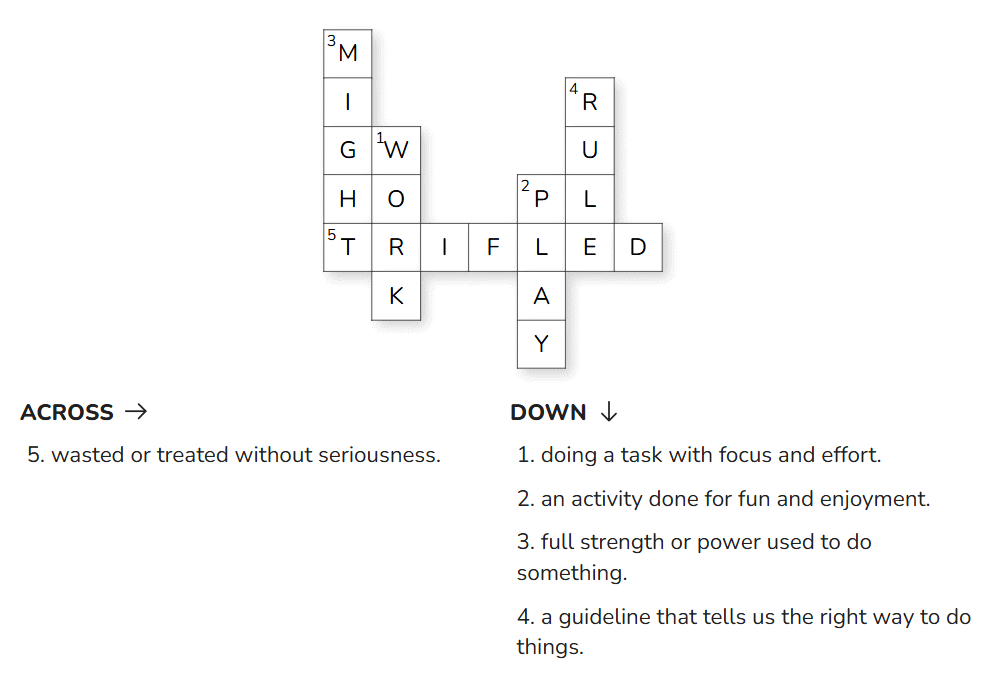Class 4 English Worksheet Solutions Chapter 4 One Thing at a Time
| Table of contents |

|
| Multiple Choice Questions |

|
| Fill in the Blanks |

|
| True or False |

|
| Match the Following |

|
| Crossword Puzzle |

|
Multiple Choice Questions
(Select the correct option)Q1. What is the main message of the poem "One Thing at a Time"?
(a) Finish work quickly
(b) Play all day
(c) Focus on one task at a time
(d) Always ask for help
Answer: (c) Focus on one task at a time
Solution: The poem emphasizes doing one thing at a time with full effort.

Q2. According to the poem, what happens when you do things by halves?
(a) You save time
(b) You do it perfectly
(c) They are never done right
(d) They make you happy
Answer: (c) They are never done right
Solution: The poem says, “Things done by halves are never done right.”
Q3. Which of the following words is a rhyming pair from the poem?
(a) Done – Run
(b) Might – Right
(c) Sit – Stand
(d) Calm – Farm
Answer: (b) Might – Right
Solution: These words rhyme and appear in the same stanza.
Q4. What should we not do with our time?
(a) Use it well
(b) Waste it
(c) Enjoy it
(d) Save it
Answer: (b) Waste it
Solution: The poem tells us not to waste time. It says, “Moments should never be trifled away.” That means we should use our time wisely.

Q5. What is the poet’s advice for playing?
(a) Play while you eat
(b) Play and work together
(c) Play all the time
(d) Play while you play
Answer: (d) Play while you play
Solution: The poet wants us to focus fully while playing too.
Fill in the Blanks
(Use words from the Word Box)Word Box: might, halves, trifled, happy, rule
Things done by _______ are never done right.
Answer: halves
Solution: The poem says, “Things done by halves are never done right,” meaning we should not do work halfway or carelessly.Do everything with all your _______.
Answer: might
Solution: The poem says, “Do with all your might,” which means we should try our best and give full effort.Moments should never be _______ away.
Answer: trifled
Solution: The poem says not to trifle away moments, which means we should not waste time.One thing at a time is a very good _______.
Answer: rule
Solution: The poem tells us that doing one thing at a time is a very good rule that helps us do better work.To be useful and _______ is the way.
Answer: happy
Solution: The poem says, “To be useful and happy, that is the way,” which means being helpful and cheerful is the right path.
True or False
(Write True or False)The poet says we should do many things at the same time.
Answer: False
Solution: The poem suggests focusing on one task at a time.You should work while you play.
Answer: False
Solution: The poem says to separate work and play and do one at a time.Doing things with full effort leads to good results.
Answer: True
Solution: The poem says, “Do with all your might,” which means we should give our best. Doing things with full effort helps us do them well.The poem encourages wasting time.
Answer: False
Solution: The poem says, “Moments should never be trifled away,” which means we should not waste time. It teaches us to use time wisely.The poem helps us understand time management.
Answer: True
Solution: It teaches focus and proper use of time.
Match the Following
(Draw a line to match each item in Column A with the correct option in Column B)| Column A | Column B |
|---|---|
| 1. Might | A. A good habit or advice |
| 2. Halves | B. Power or strength |
| 3. Rule | C. Wasting time |
| 4. Trifled away | D. Not done completely |
| 5. Useful and happy | E. Result of doing one thing well |
Answer:
1 → B (Power or strength)
2 → D (Not done completely)
3 → A (A good habit or advice)
4 → C (Wasting time)
5 → E (Result of doing one thing well)
Solution:
Might → Power or strength: The poem says to do things with all your might, meaning full strength.
Halves → Not done completely: If you do only part of a task, it remains unfinished.
Rule → A good habit or advice: “One thing at a time” is called a good rule.
Trifled away → Wasting time: Trifling means to treat something as unimportant—like wasting time.
Useful and happy → Result of doing one thing well: The poet believes we become happy and helpful when we do things properly.

Crossword Puzzle
(Solve the crossword using the given clues)
Solution:

FAQs on Class 4 English Worksheet Solutions Chapter 4 One Thing at a Time
| 1. What is the main objective of the "One Thing at a Time" worksheet for Class 4? |  |
| 2. How can students benefit from filling in the blanks in the worksheet? |  |
| 3. What types of questions are included in the "One Thing at a Time" exam, and how should students prepare for them? |  |
| 4. Are there any specific strategies recommended for completing crossword puzzles in the worksheet? |  |
| 5. How does the "One Thing at a Time" approach contribute to overall learning and academic performance? |  |















